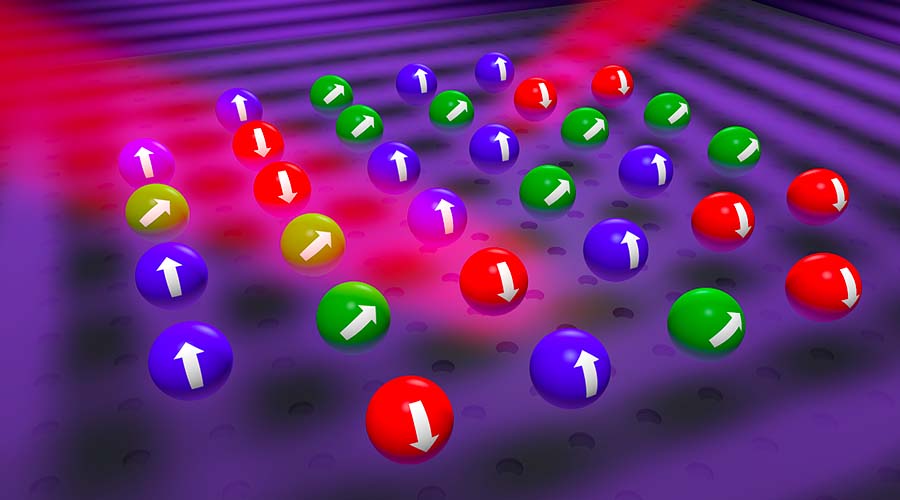 A new study has demonstrated the possibility of a new state of matter, by trapping atoms in "crystals" of laser light. The study was conducted by an Italian collaboration including researchers from the Department of Physics and Astronomy at the University of Florence, INFN, the European Laboratory for Non-Linear Spectroscopy (LENS), the National Institute of Optics of the National Research Council (CNR-INO) and the International School for Advanced Studies (SISSA). The work, published on 23 September in the journal Nature Physics, saw a significant contribution from INFN, which co-funded the research as part of the FISh experiment, in the context of which the experimental methodologies used were developed. This result could be a first step toward the development of room-temperature superconducting materials.
A new study has demonstrated the possibility of a new state of matter, by trapping atoms in "crystals" of laser light. The study was conducted by an Italian collaboration including researchers from the Department of Physics and Astronomy at the University of Florence, INFN, the European Laboratory for Non-Linear Spectroscopy (LENS), the National Institute of Optics of the National Research Council (CNR-INO) and the International School for Advanced Studies (SISSA). The work, published on 23 September in the journal Nature Physics, saw a significant contribution from INFN, which co-funded the research as part of the FISh experiment, in the context of which the experimental methodologies used were developed. This result could be a first step toward the development of room-temperature superconducting materials.
The reproduction of a state of electron localisation, a phenomenon responsible for the occurrence of insulating properties in particular materials, was achieved by means of a quantum simulator, made using a gas cooled to a few billionths of a degree above absolute zero, and composed of atoms characterised by a total half-integer spin, similar to that of fermions, i.e., the class of particles including electrons and quarks and which for this reason represent excellent models for verifying their behaviour. Once this was done, the collaboration was able to capture the gas atoms in crystals made of light and, by means of sophisticated laser technologies, to accurately control their spin. Ytterbium atomic gases, which have the property of being able to be in multiple spin states, were used to carry out the research. They also have a special property of symmetry: they interact independently of their spin, like quarks in nuclear matter, which interact with each other independently of their colour. By means of laser light, a coupling was then created between different spin states, breaking this symmetry in a controlled manner, and studying the effect of this coupling on the behaviour of the system for the first time.
The main result of the research is precisely the observation of a new state of matter in which atoms move more or less freely depending on whether or not their spins are coupled with the laser light. This effect is of great importance for the study of a particular type of high-temperature superconducting materials, where it is hypothesised that a similar process, induced by magnetic coupling between different electronic orbitals, underlies the superconductive behaviour, which can emerge when an electrically insulating state (Mott's insulator), such as the one studied in the experiment, is doped.
This research opens the door to many possible developments, from precisely studying the mechanisms of superconductivity to designing prototypes of new materials. The new experimental techniques could also be used to extend quantum simulation to the physics of fundamental interactions, for the study of processes occurring between elementary particles.
The work was carried out as part of the ERC Consolidator Grant TOPSIM project, for which Leonardo Fallani is responsible, at the Department of Physics and Astronomy of the University of Florence




